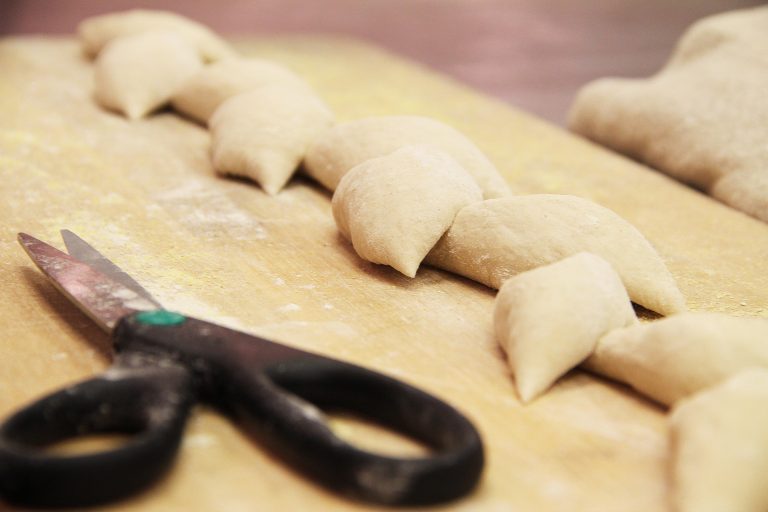The act of cooking is, at its heart, a solitary one. Of course, a restaurant kitchen requires coordinated effort and teamwork — many hands executing and assembling tiny parts of a greater whole. Each brief task in isolation, however, is a personal communion of skill and ingredient. Each step of mis en place presents an opportunity to contemplate, and a challenge to refine and better understand what we do.
My cooking career began at a tiny bakery in the outlying suburbs of Detroit almost 25 years ago. What started as “just a job” quickly became a compulsion: in cooking I found the satisfaction of manual labor and making something from nothing. Before long, I was offered an overnight baking position. At first, I merely worked my way down a checklist of standard items to mix and bake: a trio of basic breads, some viennoisserie and coffee cakes, muffins and cookies, and then the delicate chiffon layers that comprised the buttercream- and fondant-coated birthday and wedding cakes.
I worked hard and I got better, and I took on more and more responsibility. Eventually, if the cases were full at 7:00 am when the shop opened, I pretty much had free rein to bake as I pleased during these solo shifts. I often began each evening just as the bakery locked its front door at 6:00pm, and I rarely left before 8:00am the following morning. It was the first job I’d ever had where I didn’t watch the clock (and, come to think of it, I haven’t had one since).
I found a nightly groove, a rhythm fueled by black coffee and a tape deck blaring the likes of Superchunk and Sonic Youth. As a former art student, I instantly recognized the meditative shift into right-brain mode, where intense concentration makes one oblivious to external stimuli and the linear passage of time. My time-sensitive dough, and not the clock, set my schedule, as items cycled in and out of the ovens.

Though the bakery was well off the beaten path I filled its shelves and cases with lofty ambition, as if the sign outside bore the names of Parisian pastry temples Poilâne, Fauchon or Lenôtre. I was naïve, for sure, but driven. It felt as if I’d entered a kind of undergraduate phase of pastry study, and an ever-growing library of books became my syllabus.
Among them, a multi-volume set of professional French pastry books; it was a good thing I ate virtually all my meals at work; each of those six volumes set me back nearly one hundred dollars — a sizable bite out of my paycheck back then. These books were already outdated to some degree even then, but the classics never die. I methodically worked my way through each, from brioche, fougasse and pain de siegle, to pâte brisée, pâte feuilleté and pâte à choux.
I continually refined my baguettes, croissants and genoise. I also took liberties in experimenting with my own creations, many of which ended up not in the front of the shop, but in the dumpster out back. I compensated for my lack of formal training by challenging myself to learn at least one new product each day.
My nights at the bakery resembled the quiet, creative solitude I’d enjoyed while working many hours alone in the dark room in the days before digital photography. Prior to cooking, much of my time was devoted to photography, developing strips of black and white film, manipulating prints in all manner of ways. The mixing, shaping and proofing of dough is not unlike developing a negative, cropping an image and adjusting exposure. Bread goes into a hot oven to fully transform into its full potential, just as a sheet of light-sensitive paper in a bath of chemicals slowly reveals the image burned onto it.
I often compare pastry with photography — highly technical to some degree, though what ends up on the plate or within the frame could perhaps be called “art.” Today, my work in the Chocolate Lab and pastry kitchens at ICE takes on a similar solitary aspect. With several projects on my plate at any given time, my daily prep list follows no linear rhyme or reason.
There are fewer deadlines now, but surprisingly, a whole lot of dishes to clean afterward. No longer confined to the schedule and structure of a restaurant kitchen, I now find those quiet hours where I can think one thought through to its completion. And I still enjoy the hours flying by, alone with my mis en place and my own thoughts. But the results nowadays go beyond personal gratification — the fruits of this solitary refinement now feed the minds of hungry students.
Refine your craft in the kitchen classrooms of ICE — click here for more information on our Pastry & Baking Arts programs.




